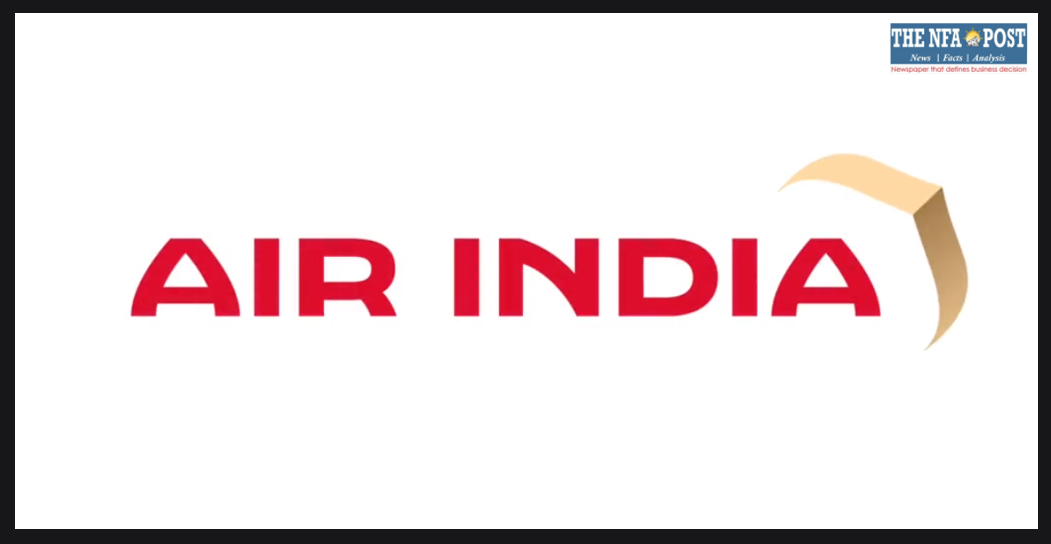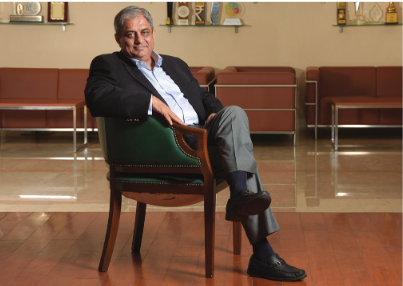-Fleet requires a lot of work; aim to have best tech in 12 months: Chandrasekaran
-Tata Sons Chairman said the best of AI, ML will be deployed at Air India and emphasised that the airline is not just another business for the group but a passion and a national mission
New Delhi, NFAPost: Airline major Air India unveiled a new logo and livery, incorporating shades of red, golden, and violet colours, on Thursday as part of a rebranding exercise after being acquired by Tata Group in January 2022.
The iconic Maharajah, Air India’s mascot since 1946, will now play a more “background” role, according to the airline’s Chief Executive Officer and Managing Director Campbell Wilson, who addressed reporters after revealing the new logo and livery.
“The Maharajah will remain similar to what we currently have, but with slight updates. We’ve made him a bit more fit and incorporated some gold and purple the new brand represents,” he stated.
When asked about the Maharajah’s presence in India, he replied, “Let time tell the story. We are, of course, going to be using it but a little bit more in the background than what has historically been the case. However, it remains an important icon.”
Regarding the Maharajah’s presence abroad, he responded, “The Maharajah isn’t as well-known abroad as it is in India, so we need to choose where and how to incorporate it judiciously. As we move further from India, its familiarity diminishes, especially in the international community.”
Each airline boasts a specific livery — a specific paint scheme with a logo applied to its aircraft. Previously, Air India’s livery consisted of red and white colours. The airline’s existing logo features a flying swan, a centaur, and a rising sun.
Tata Sons Chairman Natarajan Chandrasekaran said in his speech that the new logo (‘The Vista’) and livery, inspired by the peak of the golden window frame, represent “limitless possibilities, progressiveness, and confidence”.
Chandra acknowledged that Air India’s aircraft fleet requires substantial work.
“While we’ve placed one of the largest fleet orders for both narrow-body and wide-body planes, it will take time for them to arrive. Meanwhile, we need to refurbish and upgrade our current fleet to an acceptable standard. We’re actively working on technology; all information technology systems are being put in place. Our goal is to have the best technology within the next nine to 12 months,” he added.
Air India presently has a fleet of 127 aircraft, according to aviation analytics firm Cirium. Among these, 53 of 127 are wide-body planes, while the rest are narrow-body ones. The airline is currently refurbishing its older wide-body planes.
Vistara features violet in its symbol and livery, and the new Air India livery incorporates violet as well. Vistara is in the process of merging into Air India. Wilson noted that Vistara is a part of Tata Group, and they aimed to ensure that any future Air India representation included erstwhile Air India and other Tata Group carriers.
Regarding the timeline for implementing the new livery on all 127 planes, Chandra said, “It will take quite a while before the new livery is rolled out on all existing aircraft. As we receive new aircraft, particularly the new A350 set to be delivered in the next few months, they will feature the new livery.”
He mentioned that some older Air India planes would be retired, making it unnecessary to repaint them.
“Upgrading the product (and introducing the new livery) for narrow-body planes will be achieved through the delivery of new aircraft,” he added.
Wilson said Air India would likely induct two A350s by December and an additional three to four A350 aircraft in the January-March period of 2024.
In February, Air India placed an order for 470 planes: 250 with European aircraft maker Airbus and 220 with Boeing. This order represents the world’s second-largest single-tranche aircraft purchase. The Boeing order consists of 190 B737 MAX, 20 B787s, and 10 B777s.
The Airbus firm order includes 210 A320 family planes and 40 A350 planes. The A350, B777, and B787 are wide-body aircraft with larger fuel tanks, allowing them to cover long distances such as India-North America routes.
Chandra emphasised that Air India is more than just an airline; it is a “passion” and a “significant national mission” for Tata Group.
Tata Group took control of Air India in January of the previous year. In 2022-23, Air India’s net loss increased by 19.16 per cent to Rs. 11,387.96 crore. The Maharajah mascot was created in 1946 by Bobby Kooka, who served as the airline’s commercial director.
Best of AI, ML will be deployed at Air India, says Chandrasekaran
Tata Sons Chairman N Chandrasekaran said the best of artificial intelligence and machine learning will be deployed at Air India and emphasised that the airline is not just another business for the group but a passion and a national mission.
As Tata Group steers the transformation of loss-making Air India since taking control in January last year, Chandrasekaran said that he most of the time receives “caring criticism” about the airline that also further strengthens the commitment.
Speaking at an event in the national capital where Air India’s new brand identity and aircraft livery were unveiled, he said the focus is on upgrading all human resources aspects in the airline.
According to him, there is a lot of hard work needed but the path is clear for the airline, and added that the best of artificial intelligence and machine learning will be deployed at the airline.
“We are focusing on upgrading all human resources aspects of the airline. Our fleet requires a lot of work. While we have ordered one of the largest fleet orders, it will take time.
“In the meantime, we have to refurbish our current fleet at an acceptable level. Our aim is to have the best of machine learning and the best of AI in Air India than any other airline,” he said.
Chandrasekaran, who is also the Chairman of Air India, said that today is a very important milestone. “Our vision for the airline is also in the backdrop of a new, resurgent India, where the aspiration of everyone is limitless”.
The new logo, signified by that historically used window, the peak of the golden window, signifies limitless possibilities, progressiveness, confidence and all of that, he emphasised.
“Air India is not another business for us, it’s a passion, a big national mission… we have been at work during the last 15 months or so on this journey because our vision is to make this airline world class in terms of modernity, safety, technologically-most advanced, exceptional customer service and the experience that Air India used to be known for,” Chandrasekaran said.
Tata Group took control of Air India in January 2022.
“I get at least a couple of mails a day either criticising or complimenting but even in those criticisms I receive, each and every one of them, long or short, there’s a little amount of concern and heart – how can we keep going like that? Can you not fix it? It is a very caring criticism most of the times so our commitment is only getting stronger every day,” Chandrasekaran said.
Jehangir Ratanji Dadabhoy (JRD) Tata founded the airline in 1932 and named it Tata Airlines. In 1946, the aviation division of Tata Sons was listed as Air India, and in 1948, Air India International was launched with flights to Europe.
The international service was among the first public-private partnerships in India, with the government holding 49 per cent, the Tatas keeping 25 per cent and the public owning the rest.
In 1953, Air India was nationalised and last year, the airline was taken over by the Tata Group from the government.
Agencies





